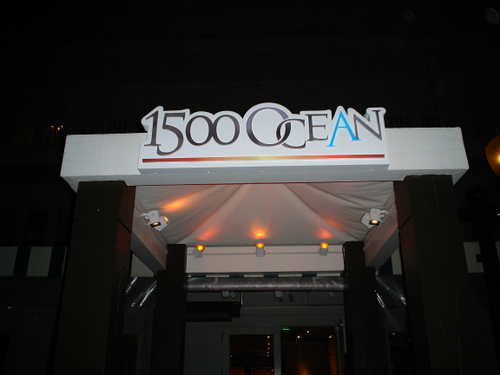I got my start on barfblog more than a year ago as a senior in Food Science at K-State when I went to a club picnic with my boyfriend and gasped at an offensive tub of tater salad.
Two days later I gasped again… this time at an Associated Press story in .jpg) which a Chinese buffet worker was spied stomping garlic with his boots behind the restaurant. Aghast, I asked,
which a Chinese buffet worker was spied stomping garlic with his boots behind the restaurant. Aghast, I asked,
“Could a fellow eater like myself be so distracted from the bacterial ramifications of using one’s shoes as a culinary instrument?”
Pretty soon I was a regular. Then I was graduated, married, and working with Doug full-time… and far too busy to formulate a blog (or some such nonsense).
So, today you’re privy to my second debut on barfblog.
This jaw-dropping tale is set at another get-together with my husband (same great guy, just a new title). And, interestingly, another use of inappropriate instruments. This one was a little closer to home:
As our hostess busied herself preparing desserts and planning her meal, she realized the spiral ham she purchased was too large for her Crock Pot. It would have to be cut to fit (finished product shown at left).
Lacking your standard bone saw, she enlisted the help of her husband… and his reciprocating saw.
She carefully washed the blade in hot, soapy water and assured her husband’s hands were clean. (He had been in the garage, after all.) Then he set to work.
She saw my eyes widen in disbelief and started to apologize, explaining she had no other choice. I quickly smiled and said, .jpg)
“Oh, I understand. But don’t think for a second I won’t blog about this!”
The moral of the story is: Invest in some appropriate instruments for use with food, if you want to ensure your cooking won’t cause dinner guests to barf.
But don’t eat poop, folks. Wash your hands. And your reciprocating saw, if necessary.




 I think this philosophy should be the same in fields, packing sheds, processing facilities, retail stores and kitchens: Leadership that values food safety should have a goal of changing the culture of an organization, resulting in behavior and habit changes on on the front-lines. And the organization doesn’t have to be complicated or large, it could be an independent restaurant with 4 staff members or a church dinner committee with 20 volunteers.
I think this philosophy should be the same in fields, packing sheds, processing facilities, retail stores and kitchens: Leadership that values food safety should have a goal of changing the culture of an organization, resulting in behavior and habit changes on on the front-lines. And the organization doesn’t have to be complicated or large, it could be an independent restaurant with 4 staff members or a church dinner committee with 20 volunteers. County inspection records for 103 of San Diego’s most popular, top-rated and most expensive restaurants show that 50 percent have been written up for at least one major food-safety violation in the past two years.
County inspection records for 103 of San Diego’s most popular, top-rated and most expensive restaurants show that 50 percent have been written up for at least one major food-safety violation in the past two years.